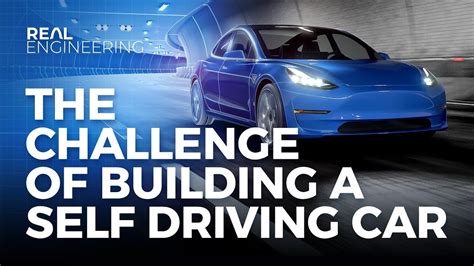The Challenges of Building a Modern Car: A Complex Engineering Feat
Building a modern car is far more complex than simply assembling parts. It's a multifaceted endeavor requiring cutting-edge technology, intricate engineering, and careful consideration of numerous interconnected factors. From the initial design concept to the final quality control checks, automakers face a myriad of challenges in bringing a new vehicle to market. This article delves into some of the key hurdles faced in modern car manufacturing.
The Ever-Evolving Landscape of Technology
One of the biggest challenges is keeping pace with the rapidly evolving technological landscape. Modern cars are increasingly reliant on sophisticated electronics, software, and connectivity features. Integrating these systems seamlessly and ensuring their reliability and cybersecurity is a monumental task. This includes:
- Autonomous Driving Systems: Developing safe and reliable self-driving technology requires massive investment in research and development, along with rigorous testing and validation. The ethical and legal implications of autonomous vehicles also present significant challenges.
- Connectivity and Infotainment: Integrating seamless smartphone integration, over-the-air updates, and advanced infotainment systems demands robust software development, rigorous testing, and ongoing maintenance. Cybersecurity concerns are paramount, protecting against potential hacking and data breaches.
- Electric and Hybrid Powertrains: The shift towards electric and hybrid vehicles introduces new challenges in battery technology, charging infrastructure, and powertrain integration. Optimizing range, charging time, and overall performance requires significant engineering expertise.
Balancing Performance, Efficiency, and Sustainability
Modern car manufacturers grapple with the need to balance performance, efficiency, and sustainability. Consumers demand powerful engines and exhilarating driving experiences, while simultaneously demanding fuel efficiency and reduced emissions. This balancing act presents a complex engineering puzzle:
- Lightweighting Materials: Utilizing lightweight materials like carbon fiber and aluminum helps improve fuel economy and performance. However, these materials can be expensive and challenging to work with, requiring specialized manufacturing processes.
- Emission Regulations: Meeting increasingly stringent emission regulations necessitates the development of cleaner engines and alternative powertrains. This requires significant investment in research and development, as well as adaptation to varying global standards.
- Fuel Efficiency Targets: Meeting government-mandated fuel efficiency targets often involves trade-offs between performance, weight, and cost. Manufacturers must carefully optimize vehicle design and engineering to achieve optimal efficiency without compromising other key attributes.
What are the biggest hurdles in designing a modern car?
The biggest hurdles are arguably the integration of complex technologies (autonomous driving, connectivity, electrification), meeting stringent regulations (emissions, safety), and managing the ever-increasing cost of R&D and manufacturing in a highly competitive global market.
What are the challenges in manufacturing a modern car?
Manufacturing challenges include sourcing high-quality components, managing complex supply chains (especially given recent global disruptions), maintaining precise quality control across numerous production stages, and ensuring worker safety in increasingly automated factories.
How are modern cars becoming more complex?
Modern cars are becoming increasingly complex due to the integration of advanced driver-assistance systems (ADAS), sophisticated infotainment systems, connected car technologies, and the transition to electric and hybrid powertrains. This complexity increases the demand for skilled engineers, specialized manufacturing processes, and rigorous testing procedures.
What new materials are used in modern cars?
Modern cars increasingly utilize lightweight materials like aluminum, carbon fiber, and high-strength steel to improve fuel efficiency and performance. These materials often require specialized manufacturing techniques and can significantly impact the overall cost of production.
Supply Chain Management and Global Competition
The automotive industry is characterized by complex global supply chains. Managing these chains effectively, sourcing high-quality components from diverse locations, and ensuring timely delivery is crucial. Geopolitical instability, natural disasters, and unexpected disruptions can significantly impact production and profitability. Furthermore, the intense global competition necessitates continuous innovation and cost optimization to remain competitive.
The Human Factor: Safety and Design
Ensuring the safety of occupants is paramount. Meeting stringent safety regulations and incorporating advanced safety features requires rigorous testing and validation. Simultaneously, designing a vehicle that is both aesthetically pleasing and ergonomically comfortable presents a significant challenge. Balancing these factors to create a vehicle that meets consumer expectations while adhering to safety standards is a delicate process.
In conclusion, building a modern car is a complex and challenging undertaking. The convergence of technological advancements, regulatory pressures, and global competition necessitates continuous innovation and adaptation. Overcoming these hurdles requires a collaborative effort across engineering, manufacturing, and design, along with a deep understanding of the ever-evolving automotive landscape.

